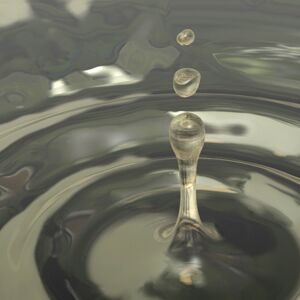
Shale-Shocked: Hydraulic Fracking Turns Into a Curse
Ever feel like America is cursed? Take our addiction to fossil fuels. It’s a conundrum. America desperately needs an inexpensive and clean source of energy. America has plenty of coal—it even has oil—but they are dirty. Conversely, America has geothermal, wind and solar, but most of it is comparatively expensive.
Lately, natural gas has been hailed as an energy savior. But is it?
America has been harvesting traditional sources of natural gas for decades. At one time it was so abundant and cheap that when energy companies drilled an oil well and accidentally encountered natural gas, they would burn it to get rid of the worthless stuff.
But demand for natural gas grew. By 2006, prices reached $15 per cubic meter. Five short years later, however, they have crashed to nearly $2. During this time, the energy industry was thrown into chaos. Companies floundered. Others skyrocketed in value.
What happened?
America got its wish. It found a cleaner and abundant source of energy: shale gas. Coal prices plummeted, and mines closed as utilities switched to the cheaper and cleaner fuel to produce electricity.
A technological advance called hydraulic fracturing (fracking for short) allowed energy companies to harvest shale gas (a type of natural gas) trapped deep within the earth. It changed the United States into a natural gas superpower. Recent estimates indicate America now has as much economically recoverable natural gas as Saudi Arabia. It is enough, experts say, to power America’s current electricity needs for 100 years or more.
Six years ago, who would have thought that America would be planning on exporting natural gas to other countries? What a blessing, right?
Not so fast. As it turns out, there is a catch. And the catch is big.
Unlike in conventional gas fields where the gas is trapped in bubble-like caverns, shale gas is trapped in billions and billions of tiny pores dispersed throughout the shale. To get the gas, energy companies literally blast apart the underground formations to create billions of tiny fractures for the gas to escape.
In each high-volume hydraulic fracking event, anywhere from 1 to 8 million gallons of water mixed with sand and chemicals are forced into the underground shale formation to crack it and keep it open. Approximately half of the water-chemical mix will flow back up the well, is considered industrial waste, and needs to be disposed of. Each well may go through up to 10 fracking events in its lifetime.
Eighty million gallons of water—per well. Currently, more than 150,000 wells have undergone hydraulic fracturing in Pennsylvania alone. And analysts say shale gas drilling is only getting started.
That’s a lot of water—a lot of polluted, unusable water.
The gas industry describes fracking fluids as containing ingredients like soap and oil. However, because recipes are highly guarded secrets, the public never knows what is in them until an accident happens. Samples from some spills have revealed that the fluids contain more than 200 different chemicals, many of which have been linked to cancer and birth defects. USA Today reports that municipal waste water systems can’t handle the chemicals in the waste water, which can contain radioactive elements.
Instead of paying to clean up this polluted water, gas companies instead chose to bury it in the ground. There are about 144,000 disposal wells in the U.S., into which about 2 billion gallons of waste fracking water are injected daily. This is the new “safer” disposal method. Previously, gas companies just let the polluted water sit in lagoons until it seeped away.
Water is a precious commodity. Only 3 percent of the world’s water is fresh. Most is locked away in glaciers and icecaps. Of the water that is available, the vast majority is in the ground. But it is unevenly distributed.
Groundwater is a huge blessing for America. It makes much of America agriculturally habitable. It is why ranchers can run cattle and farmers grow crops in parts of the country considered desert. It is what sets apart Arizona from parts of North Africa.
America’s groundwater is so precious that President Obama supposedly cancelled the proposed Transcanada pipeline because it transversed the important Ogallala water aquifer. The risk of contamination was just too great, he said. There are thousands of pipelines already dissecting it, but one more is one too many.
Yet with hydraulic fracking, America is not only purposefully polluting huge amounts of water to frack rock formations, but it is then purposefully disposing the wastewater by pumping it back down other wells—and potentially into contact with groundwater aquifers. And once groundwater gets polluted, it can take generations to clean it up.
Of course, gas companies will tell you that fracking fluid does not escape into the environment or pollute groundwater supplies. James Northrup, a former manager for oil company arco, calls that theory “junk science.” He says that 25 percent of frack wells leak after five years and 40 percent after eight. “Everybody in the industry knows that gas drilling pollutes groundwater,” he says. “It’s not … whether they leak. It’s how much.”
The shale gas blessing has turned into a curse.
Most people probably don’t believe in curses today. Yet the more you look at America—the economic collapse despite astounding natural resources, the crazy weather, the military defeats by nations fractions of our size, and so on—it is getting harder and harder to believe anything else.
If you believe the Bible, you know that God promises blessings for obedience and curses for disobedience. The curses are getting harder and harder to discount. Don’t be shale-shocked if they keep on coming.
